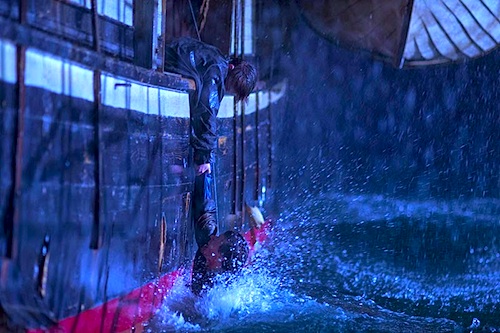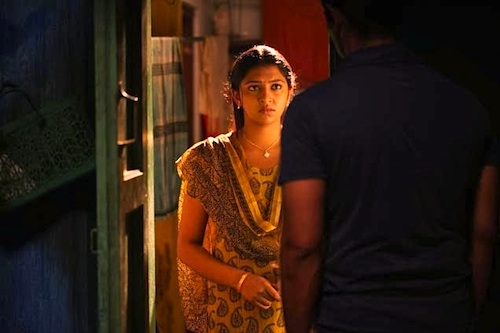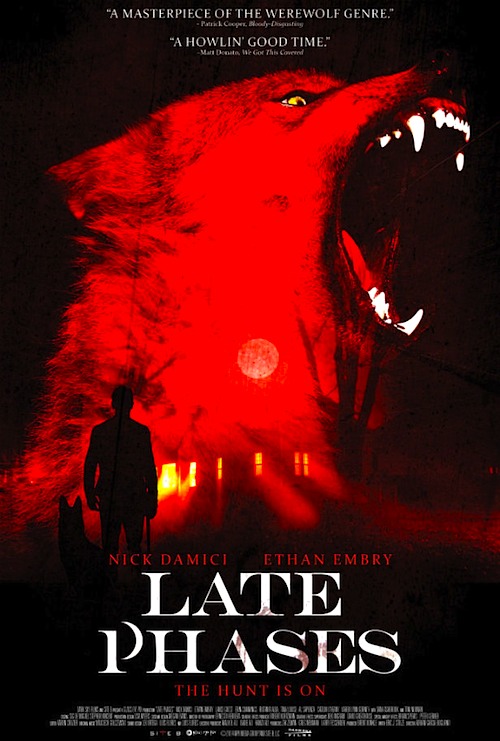By Joe Bendel. The development of electricity and fossil fuels greatly improved the western standard of living, but it was even better news for whales. Demand for whale oil largely evaporated, but considerable damage to the whale population had already been done. By 1820, the Essex whaling ship had to venture far out into the Pacific Ocean to find their quarry, leaving them in a highly vulnerable position when disaster struck. Based on the misadventure that inspired Melville’s Moby-Dick, the Essex’s last voyage is now the subject of Animal Planet’s first scripted dramatic special, The Whale: Revenge from the Deep, which premieres on the network this Wednesday.
Old man Thomas Nickerson was a green cabin boy on the Essex and lived to tell the tale in flashbacks to his interlocutor and the audience. Although he lived on Nantucket, he was still considered an outsider by most of the crew. Initially, he finds more acceptance from the freed African American laborers than the crusty old “deckers.” However, first-time Captain George Pollard, Jr. takes a shine to the lad, perhaps out of solidarity. The demanding first mate Owen Chase grudgingly admits the boy rises to each challenge he gives him, but remains cold and aloof.
Still, things seem to be looking up when the Essex finally lands its first kill of their frustrating cruise. Ominously though, the hunters soon become the prey, when the freshly harpooned whale’s companion starts pursuing the Essex. Nobody aboard fully understands how serious the situation is, until it is too late. With the Essex crushed into kindling, a rag tag group of survivors, including Nickerson, Pollard, and Chase, will try to navigate three of the Essex’s twenty-foot whaleboats to civilization.
Although whales play a critical role in Revenge, they largely exit the stage at the midway point, leaving the desperate humans to their own folly devices. While Animal Planet viewers might expect something like the early beta version of Moby-Dick, it is actually a rather harrowing shipwreck story.

Tightly helmed by Alrick Riley within his British television budget constraints, The Whale gives viewers a vivid sense of the life-and-death struggle to survive on the high seas in open boats without provisions or any means of communication. While the whale attack effects pale in comparison to films like Life of Pi, the makeup team does first rate work representing the ravages of sun and elements. Frankly, it hurts just to look at their massively chapped lips and blistered faces.
Martin Sheen does his ancient mariner thing well enough, narrating as the old haunted Nickerson, while Charles Furness is convincingly earnest and over-awed playing his younger self. Nonetheless, John Boyega will likely get top-billing in future re-packagings, once viewers see him in the forthcoming Star Wars film. As Bond the cook, he exhibits the strong presence that made him a breakout star in Attack the Block, but it is still very definitely a supporting part. Frankly, Jonas Armstrong and Adam Rayner really carry the film as the complicated rivals, Chase and Pollard, respectively.
One thing comes through loud and clear in Revenge. If you ever see a whale bum-rushing your masted sailing ship, it means trouble. Although Animal Planet is presenting it in conjunction with their R.O.A.R. wildlife conservation campaign, the film itself wisely avoids an overly preachy tone. Pretty good for a television historical, The Whale: Revenge from the Deep airs this Wednesday (11/26) on Animal Planet.
LFM GRADE: B
Posted on November 24th, 2014 at 12:15pm.




